 Story – Shannan Makauskas and Photos – Roz Neave
Story – Shannan Makauskas and Photos – Roz Neave
William Fox-Pitt talks about essential groundwork for event riders and their horses, he tells us to teach horses to think for themselves – in a way that has them working with you, not against you. By establishing good habits, and taking your time on the flat, you’ll have your controls sorted out for cross-country and the show jumping phase as well.
William is working with Seamus Marwood and the seven-eighths Oldenburg mare, Wild Oats.
Good rider position is bound to produce success, but when it comes to size, William feels it’s even more crucial: “It’s very important that we focus so much on position, because a big rider in the wrong position is far more detrimental than a little rider in the wrong position.”
“I think one of the most important things to be aware of as a rider, is it’s not good for anyone to use strength in riding without knowing it. Stiffness through the body also affects the horse, so we have to be more aware of how we ride.”
As soon as he saw the basic gaits of the horse, he gave his take on what type of horse we were watching: “She’s got a nice enough trot. The canter’s a little staccato, which is good to jump from, and easy to adjust, but not so easy in the dressage when you want softness and groundcover. It’s easy with a horse like that to become too focused on the hands. She’s seven-eighths Oldenburger, but you wouldn’t know it, she’s so Thoroughbred looking.”
“As she’s warming up, let her have a look around, that’s quite understandable. But as she relaxes, ask for a braver trot. Use more leg and then allow her to come through. If the head comes up to have a look around, put the leg on, take a contact, get her together again and then release. Often the rider has to be the first one to let go, it doesn’t necessarily go with our instinct when we’re on a horse, but in actual fact, if the rider lets the horse go forward, the horse will then give.”
While Seumas cantered Wild Oats on the circle, William assessed his position: “Work on relaxing her, flexing her, and keeping a nice, elastic contact in each hand. You’re gripping with your knees, think about softening through the leg and keeping a nice contact into each rein.”
“Your habit in the canter is to let the leg creep forward and then let your weight come behind your leg, so you’re slightly sitting into the back of the horse, rather than sitting on top of the horse. When you’re riding like that your spur is touching the horse when you don’t want it to, and I think sometimes you’re getting her quick when you don’t mean to. Canter down the long side with a relaxed leg, don’t grip with your knee, and let your legs come around the horse.”
The reins in neutral exercise – holding the reins in the hands in reverse to the conventional way
“Your hand’s too stiff on the inside rein, have the reins in neutral. Just think about having a nice soft contact. Now you’re restricted with how much fiddling you can do with the fingers, and you’re more likely to be able to give the horse a secure contact, and a contact that’s consistent from your shoulder, so it’s not broken by an awkward elbow position or something funny going on with your wrist or in your fingers.”
“You have to go for a punchier trot, even though she’s a worrier in tests. Be braver with her on a daily basis so she’s more relaxed in the arena. I think when you get a tight, tense horse, it’s very easy to stub it all down. But then you’ve got a horse that’s tight and tense and also going nowhere.”
“If you allow the horse to go forward, bend her, half halt her, and give her things to think about, then you can use that energy to improve the paces. That’s not going to happen straight away, you have to work on this regularly, but no matter how awful or how tense she feels, you’ve got to give. How much you give depends on how she feels to you, sometimes you can give for two strides, sometimes just one stride, and sometimes just with the inside rein.”
“Stay in that trot rhythm, but flex her a bit to the outside, then flex a bit to the inside. Good, now you’re softer in the back, so she’s softer in the back. She’s very athletic and she looks quite goey and punchy. You can see in an electric atmosphere or a test, straight away she’s going to get tight and short.”
“With a hot mare like this you can’t avoid any issues, you have to be brave and just get on with it. What’s nice about this mare is when Seumas does soften, she gives the correct response, she’s quite eager, she’s looking around, but when he actually lets go, she does stay with him.”
Wild Oats was starting to relax: “I’m really pleased with that, I think she’s taken on board all that work and she looks quite relaxed with it now, just pop a flying change in the other way when you’re ready, get more quality in the canter first, soften your position, soften your shoulders. I always say, prepare it as best you can and then don’t worry if it goes wrong.”
After their warm-up, William was quite excited about the combination: “I think looking at you there’s a lot we can do very quickly. If you just think about yourself, think about your softness, and stop worrying about her mouth, it will all come together. She looks like she’s making a nice contact now and when she does, she paints a great picture. She was against you before, but now she’s nice and soft.”
William was unconvinced about Seumas’s choice of stirrup length for jumping:
“I think that’s too long, but we’ll see how you go. As I said before, you’ve got to be comfortable, but looking at Seumas there, I’m thinking he’s going to be too straight in his body. I think a bent leg gives you more security around the horse, and more weight in your heel, and it just makes it easier for the horse to jump underneath you.”
In their first attempt over the cross bar, they left the fence up despite giving it a bit of a knock: “It can be good when they brush the jump because they learn from that, she looked quite focused in her approach so she might just need to warm into it and get on the job. When they’re coming in trot for the first time it can be awkward and you can end up jumping it off a hanging rein.” (uneven contact).
William was pleased with how Wild Oats took to the fence: “You can see she’s very focused and she looks like she quite enjoys her jumping. What we want to do now is get her in a nice rhythm and under control, so we’re not getting any resistance.”
“People often ask me what I do in the approach to the fence, or why. I think the most important thing is not to think about it, you should do whatever you’re feeling. If you feel you need to bring the horse back, then sit back and do it. But if you feel the horse is getting tight or flat under you, then come forward out of the saddle, allow the horse to free up in his back, and then come down into the saddle as you approach the fence.”
William asked Seumas to demonstrate his point: “Allow her, stay out of the saddle very quietly and then, as you come out of the corner, sit down. Don’t sit back, sit down. Think about being soft in your pelvis and see whether that will get rid of that bit of tightness I can see in her body. Circle now, shorten your reins, bring yourself forward so you feel comfortable, your lower leg is too far forward.”
They cleared the fence nicely, but a little rushed, which brought William to his next point – sometimes the rider gets so keen in their approach to the fence that they jump it before the horse does: “You get to the fence and you take the jump too quick, you’re not allowing her to relax.”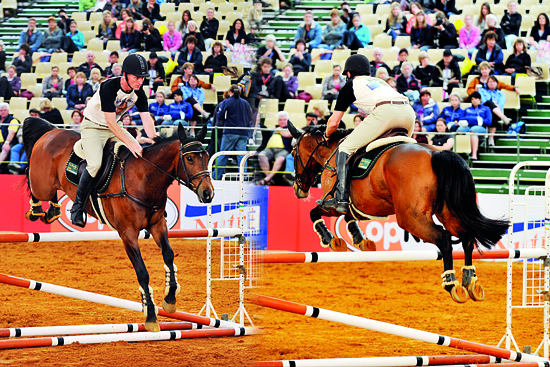
Rather than lowering the jump, William put it up: “I want Seumas to be able to jump the bigger fences in a more relaxed way. Normally when the jumps go up, we’re jumping higher ourselves, and we get tighter in our position, then we make mistakes. I want you to let the horse jump the jump, let it happen underneath you.”
Seumas did exactly that: “Much better. There you were more relaxed to the fence, so when you had to wait for an extra stride you could easily do it, before the strides were increasing and getting longer.”
Next the work was over blocks
But it got tricky when William had them jump the narrow block from trot:
“That was a really typical thing to happen, just walk a second and let me explain. When the rider is trying to get the horse to listen, they usually use their reins, and then the horse is suddenly thinking about the rider. At the same time, the horse is thinking I want to go, I want to go. So they tell the rider to get lost, forget they’re almost at the fence, and then she gets there and she wants to jump it but she wasn’t really looking at it, because she was distracted by the rider. That’s where it’s so important to do those smaller exercises with the horse when they’re younger, it teaches them to focus on what they’re doing, and learn to listen to you, so it becomes quite natural for them to accept what you’re saying without resisting.”
“This mare is quite keen, she’s quite boisterous. I think she thinks she knows best quite often, and particularly on the cross country course, when the blood is up, and you’ve got tight turns with a skinny like that, she’s going to think I know, I know, I know, and then she gets lost and it’s too late. Come back again, prepare earlier, and then leave her alone when you feel you can, she needs enough room to focus up on the fence.”
Essentially, it was about teaching the horse how to prepare for the fence themselves, without the rider interfering or distracting them.
William said: “That way when they come to the fence they’re actually looking at it. The rider needs to sit quietly, come through the turns, and wait for the fence to come to them. When you have a horse like this, that really knows their stuff, all this training is so much fun. It’s really fun to work with a horse that’s so focussed-in on the fences, and trying to understand what you’re wanting.”
Seumas took it all in and cleared the fence without the last minute rush, William was full of praise: “That was a perfect demonstration, just what we needed. You came in with a floaty canter, which can be risky, but she knew what she was doing, you stayed relaxed, and there was never any chance she was going to run out on it.”
“When you’re on course and there’s a misunderstanding or you get unlucky with a stumble or some other distraction, the horse’s ability to focus on the fence is what will get you out of trouble.”
William at the 2002 WEG in Jerez – a focussed horse…
.This article first appeared in the April 2011 issue of THM.
Breeding your event star in Australia? Go to www.ihb.com.au and select the right stallion for your mare. Like Britannia Royale…
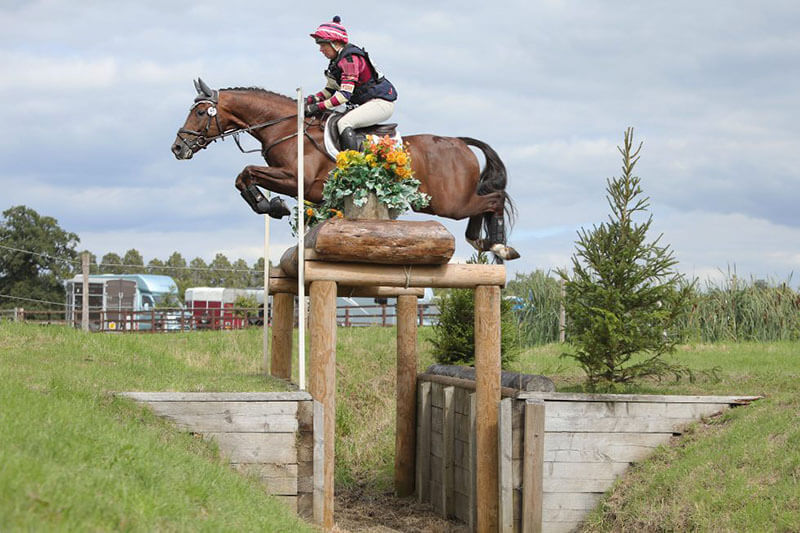



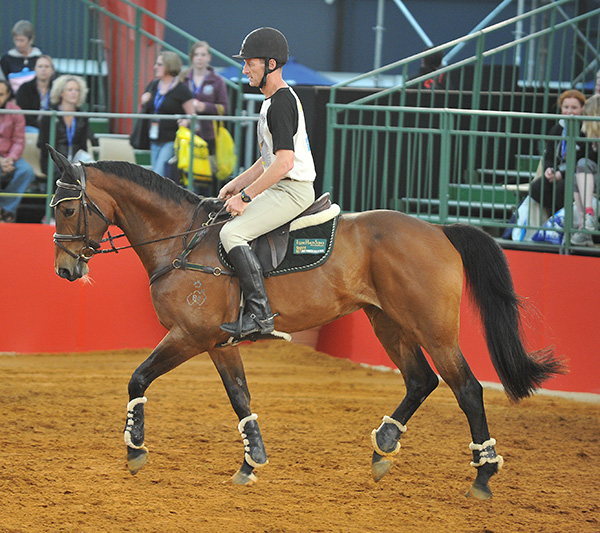
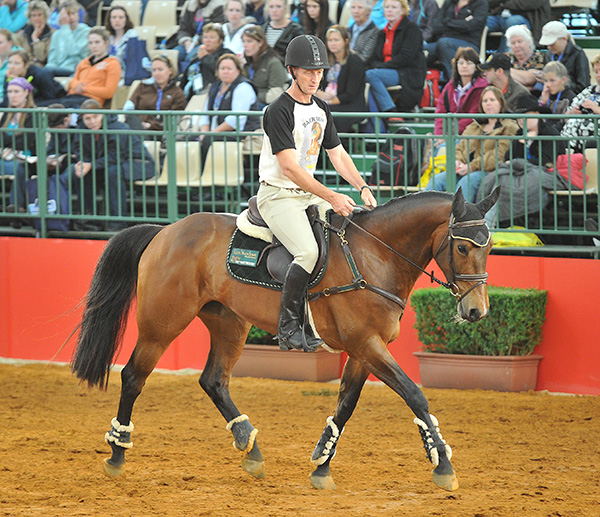
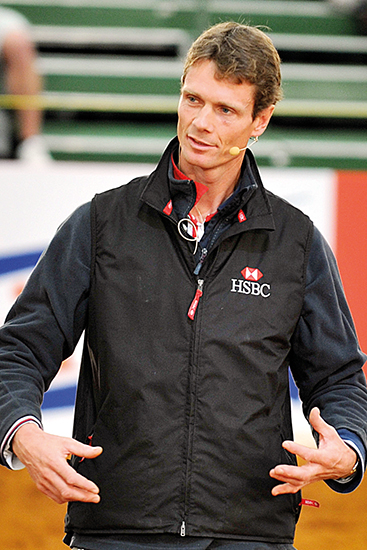
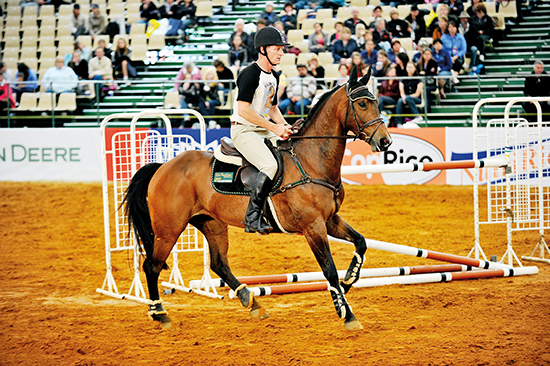
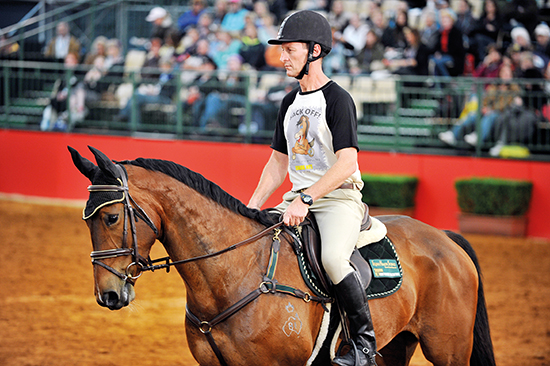
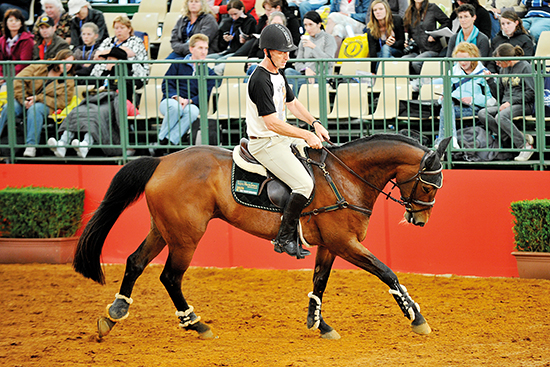
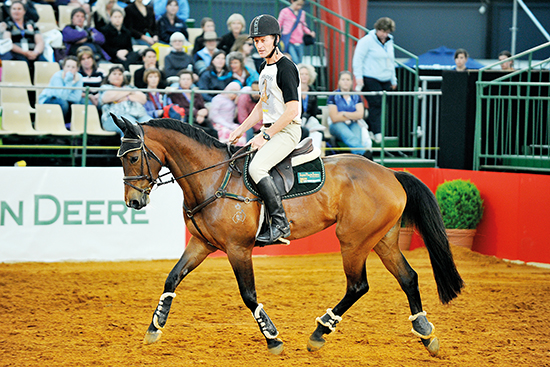
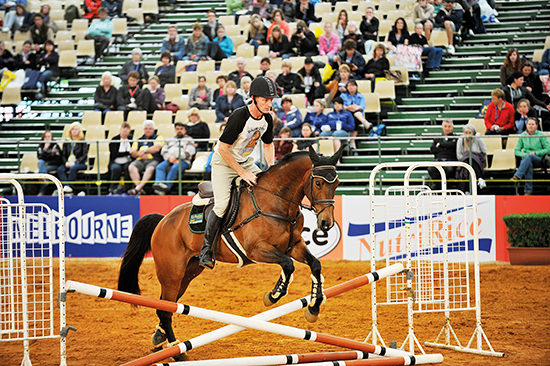
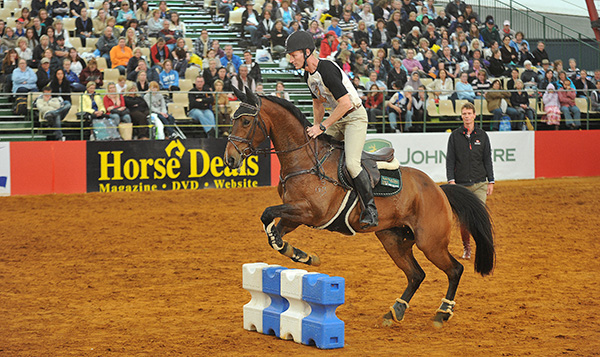
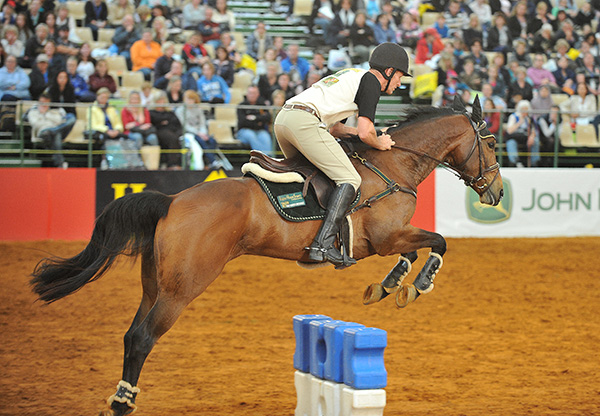
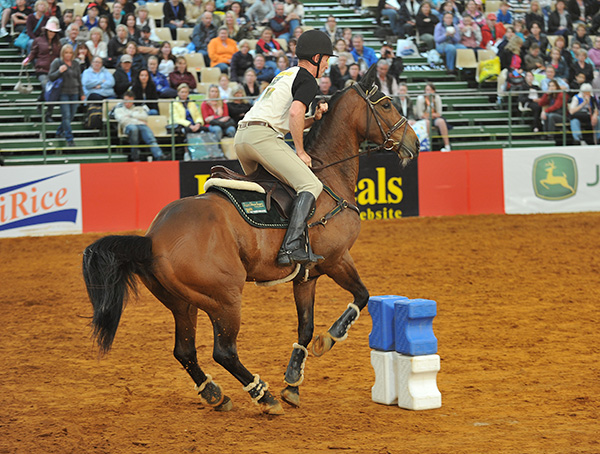
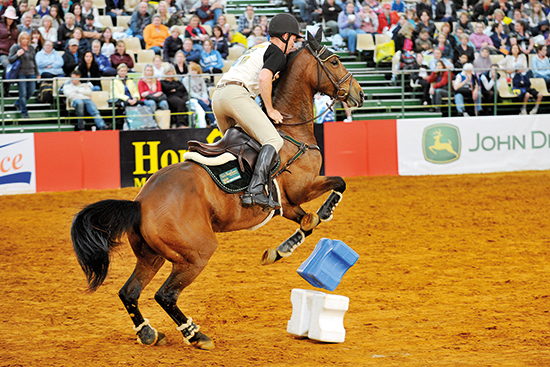
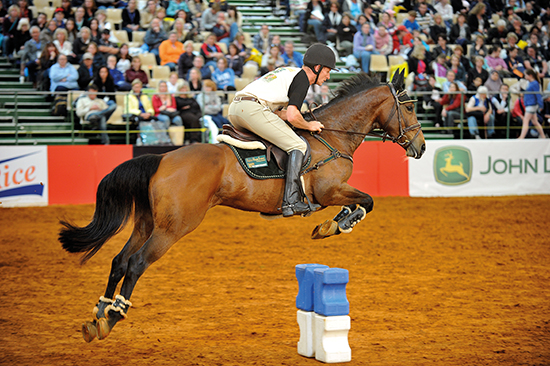
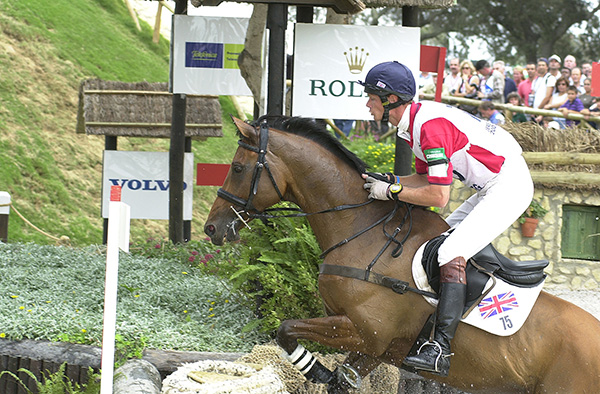
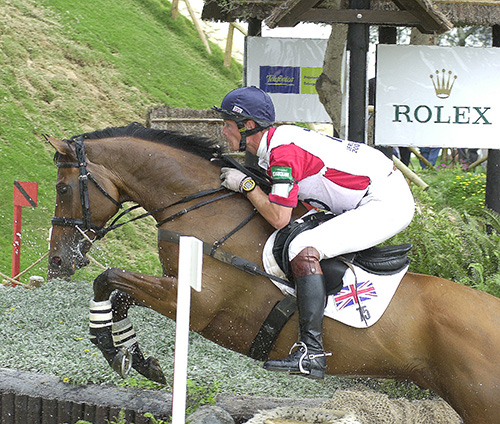
This is a great article written about a great horsemans who has made it easy to follow his tips on how to get it right.